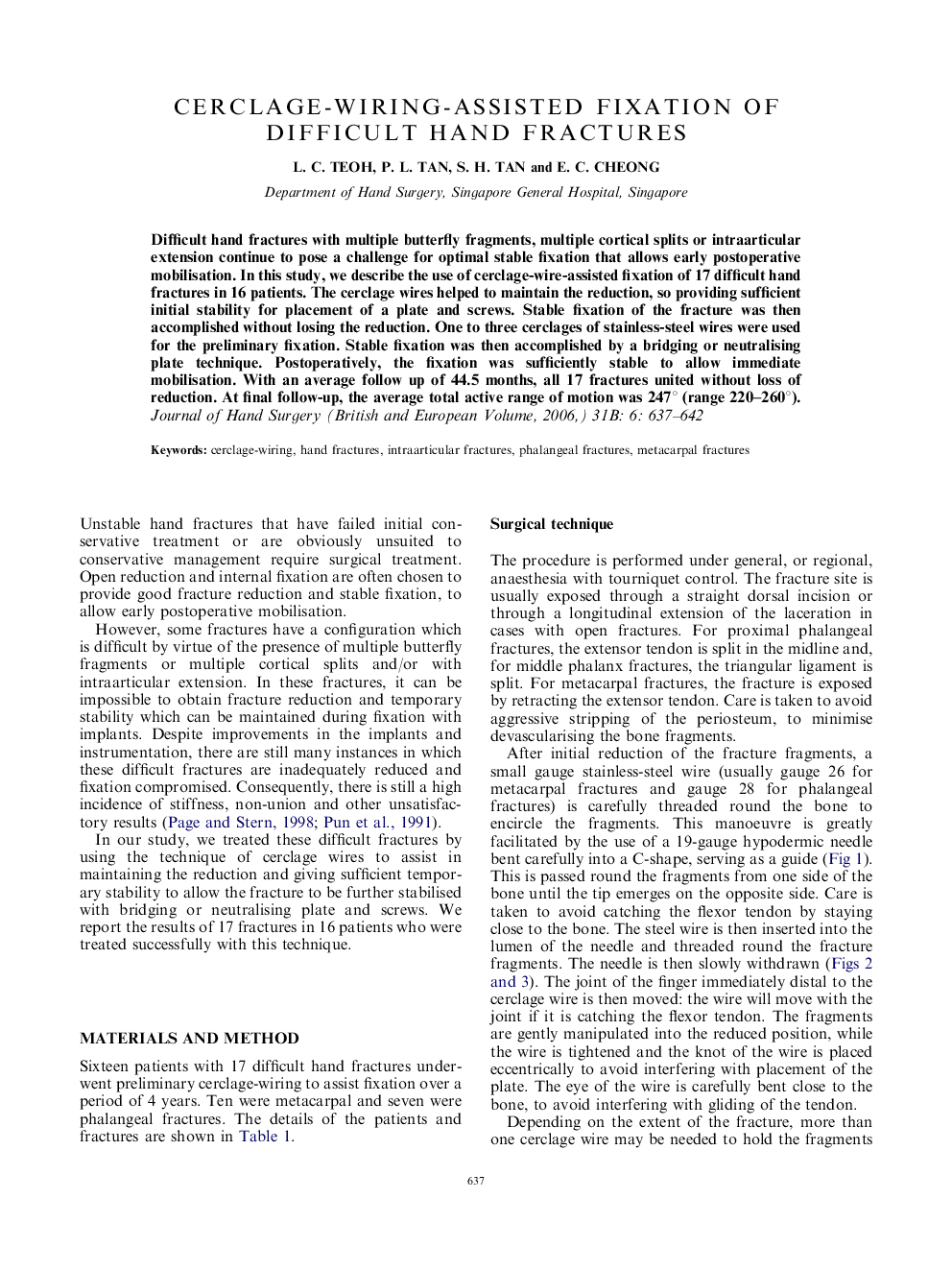| Article ID | Journal | Published Year | Pages | File Type |
|---|---|---|---|---|
| 4071659 | The Journal of Hand Surgery: British & European Volume | 2006 | 6 Pages |
Difficult hand fractures with multiple butterfly fragments, multiple cortical splits or intraarticular extension continue to pose a challenge for optimal stable fixation that allows early postoperative mobilisation. In this study, we describe the use of cerclage-wire-assisted fixation of 17 difficult hand fractures in 16 patients. The cerclage wires helped to maintain the reduction, so providing sufficient initial stability for placement of a plate and screws. Stable fixation of the fracture was then accomplished without losing the reduction. One to three cerclages of stainless-steel wires were used for the preliminary fixation. Stable fixation was then accomplished by a bridging or neutralising plate technique. Postoperatively, the fixation was sufficiently stable to allow immediate mobilisation. With an average follow up of 44.5 months, all 17 fractures united without loss of reduction. At final follow-up, the average total active range of motion was 247° (range 220–260°).
